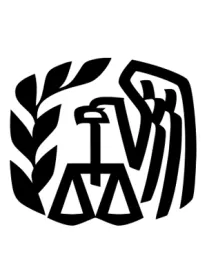On September 15, the Internal Revenue Service published final regulations revising examples related to the application of the controlled group rules to regulated investment companies (RIC) and how the controlled group rules affect the diversification tests that a RIC needs to satisfy. In addition to the regulations, the Internal Revenue Service issued Revenue Procedure 2015-45 (the “Revenue Procedure”), which describes conditions under which an upper RIC that invests in one or more lower RICs in a “fund of funds” structure will be treated as satisfying the 25% tests described below.
In order to be treated as a RIC, under Section 851(b)(3)(B) of the Internal Revenue Code of 1986, as amended (the “Code”), at the close of each quarter of the taxable year not more than 25% of the value of the RIC’s assets can be invested in (i) the securities (other than Government securities or the securities of other RICs) of any one issuer; (ii) the securities (other than the securities of other RICs) of two or more issuers that the taxpayer controls and that are determined, under regulations prescribed by the Secretary, to be engaged in the same or similar trades or businesses or related trades or businesses; or (iii) the securities of one or more qualified publicly traded partnerships (as defined in Section 851(h) of the Code) (the “25% tests”).
Section 851(c) of the Code provides special rules for the application of the 25% tests. Generally, when calculating the value of a RIC’s investment in the securities of an issuer for purposes of determining whether the 25% tests have been met, the RIC’s proper proportion of any investment in the securities of such issuer that are held by a member of the RIC’s “controlled group” must be aggregated with the RIC’s investment in such issuer, as determined under regulations. A controlled group is one or more chains of corporations connected through stock ownership with a RIC if (i) 20% or more of the total combined voting power of all classes of stock entitled to vote of each of the corporations (except the RIC) is owned directly by one or more of the other corporations, and (ii) the RIC owns directly at least 20% or more of the total combined voting power of all classes of stock entitled to vote of at least one of the other corporations.
The finalized regulations make clear that a RIC and its subsidiary can qualify as a controlled group even if the controlled group consists of just the RIC and that subsidiary. This clarification means that in order to satisfy the 25% tests a RIC must look-through its direct subsidiary, not just subsidiaries that are two or more levels down.
The Revenue Procedure, meanwhile, applies to a RIC that directly holds 20% or more of the combined power of all classes of stock entitled to vote in one or more subsidiary RICs, and does not apply to any upper RIC if a purpose of the fund of funds structure is to enable the upper RIC to invest (directly or indirectly through one or more members of the upper RIC's controlled group) in securities of an issuer or category of issuers at levels that would not be permissible if the 25% tests were applied without regard to the Revenue Procedure.
The Revenue Procedure provides that the 25% tests are applied first at the lowest level RIC in the controlled group chain, and then to the next lowest level and last to the upper RIC. In other words, each RIC in a controlled group must satisfy the 25% tests starting with the lowest level RIC. In addition to the finalized examples provided in the regulations, the Revenue Procedure also provides examples illustrating the application of the above principles.





 />i
/>i

